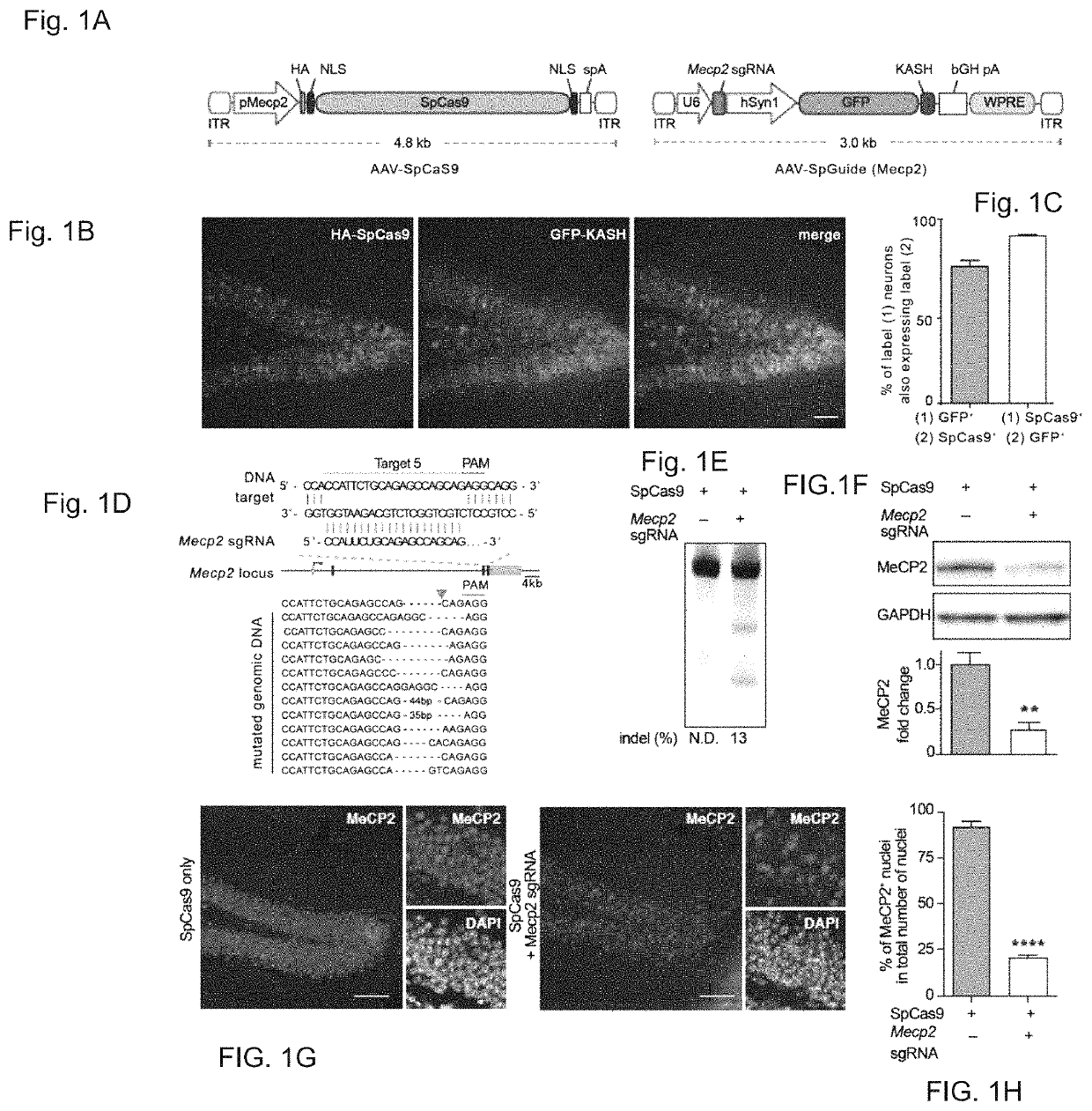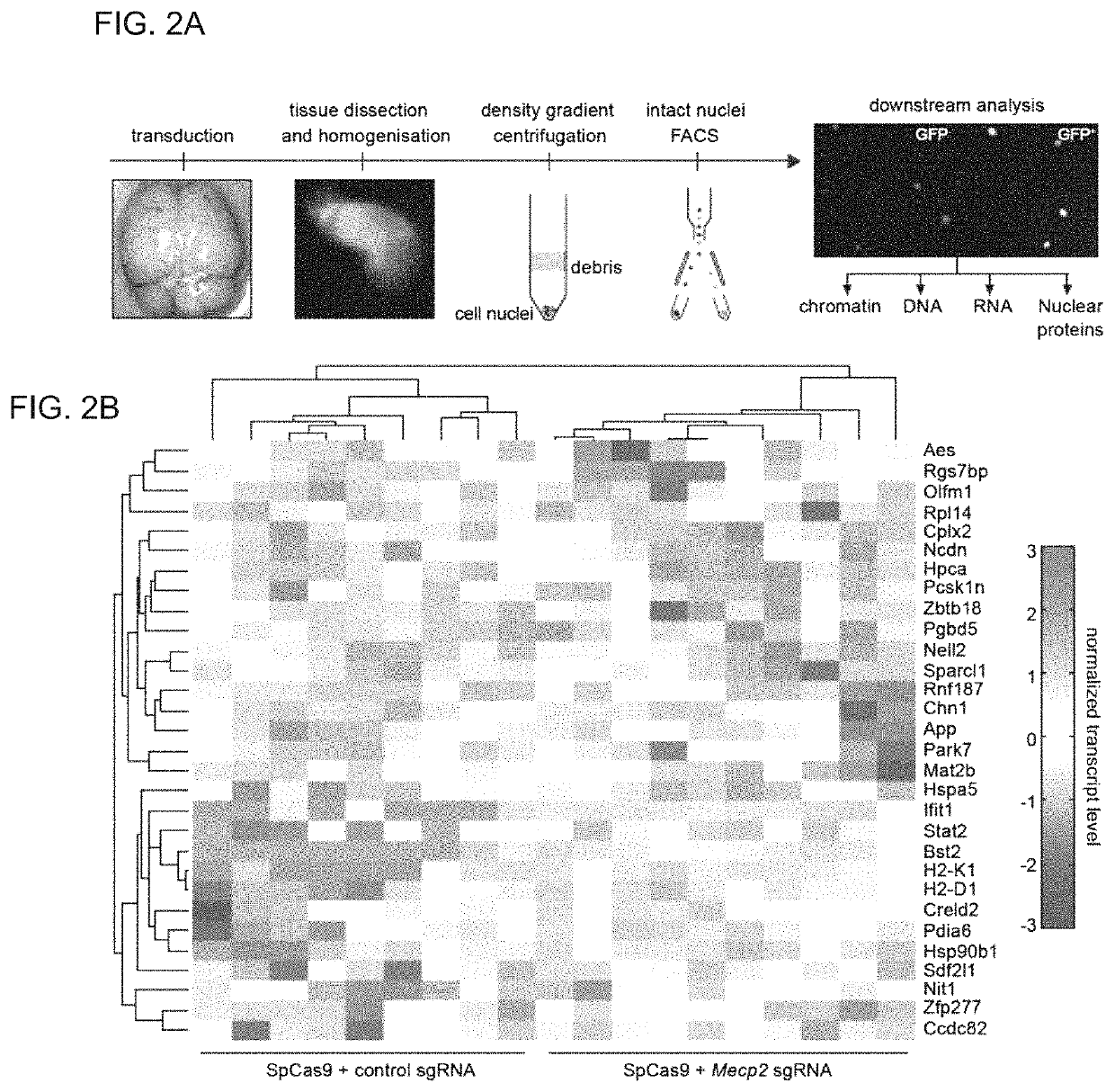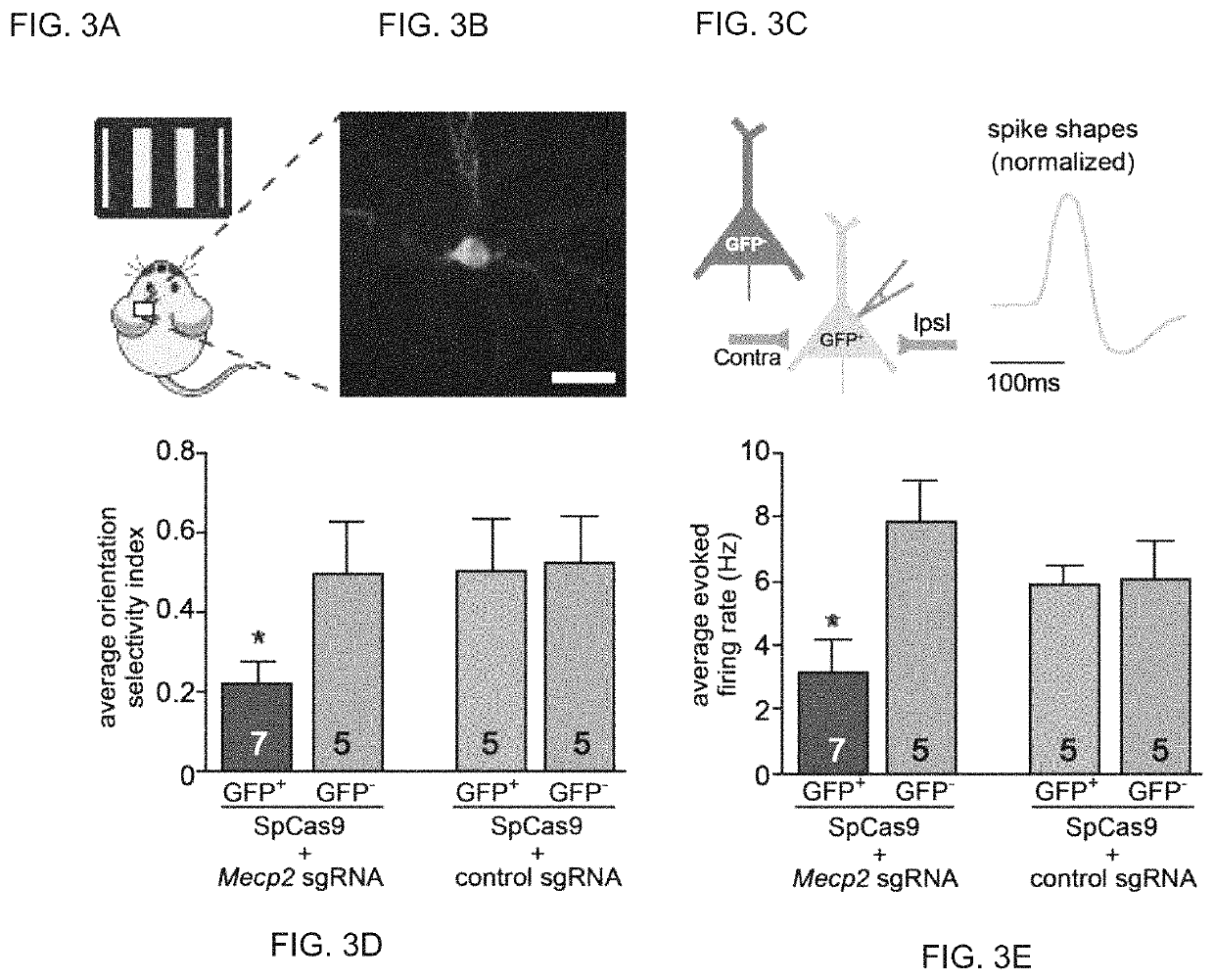Delivery, use and therapeutic applications of the CRISPR-Cas systems and compositions for genome editing
a genome editing and composition technology, applied in the direction of drug compositions, peptide/protein ingredients, genetic material ingredients, etc., can solve the problem of limited number of successes of small molecules
- Summary
- Abstract
- Description
- Claims
- Application Information
AI Technical Summary
Benefits of technology
Problems solved by technology
Method used
Image
Examples
example 1
nterrogation of Gene Function in the Mammalian Brain Using CRISPR-Cas9
[0636]The publication by Swiech, L. et al. entitled “In vivo interrogation of gene function in the mammalian brain using CRISPR-Cas9.” Nat Biotechnol. 2014 Oct. 19. doi: 10.1038 / nbt.3055. [Epub ahead of print] is incorporated herein by reference. This work presents the following main points:[0637]First demonstration of successful AAV-mediated Cas9 delivery in vivo as well as efficient genome modification in post-mitotic neurons;[0638]Development of a nuclear tagging technique which enables easy isolation of neuronal nuclei from Cas9 and sgRNA-expressing cells;[0639]Demonstration of application toward RNAseq analysis of neuronal transcriptome;[0640]Integration of electrophysiological studies with Cas9-mediated genome perturbation; and[0641]And demonstration of multiplex targeting and the ability to study gene function on rodent behavior using Cas9-mediated genome editing.
[0642]Transgenic animal models carrying dise...
example 2
etina Disease Model (Mouse Model for Retinitis Pigmentosa)
[0707]Applicants demonstrate the in vivo effectiveness of a genome engineering approach using Cas9 when packaged into AAV, and have successfully used it to modify endogenous genome sequence in mammalian cells. Applicants use this system to demonstrate genetic engineering potential in neurons, which represents one key group of post-mitotic cells in human body. Applicants' studies underscore the therapeutic potential of this in vivo genome engineering of somatic tissue through the correction of mutations associated with human disease Retinitis Pigmentosa in the mouse model that bears mutation corresponding to the similar genetic defects found in human patients. The mouse strain used for Applicants' studies is C57BL / 6 strain B6.129S6(Cg)-Rhotm1.1Kpal / J. This mouse strain was chosen because these mice carry a nucleotide substitution at codon 23 in the mouse rhodopsin (Rho) gene, CCC to CAC. This codon encodes the amino acid subst...
example 3
herapeutic Genome Engineering Approach for Retinitis Pigmentosa
[0716]Guide Selection and In Vitro Validation
[0717]First, guides for SaCas9 that target the gene RHO in human genome are designed as shown below. It has been selected based on the locus of disease-causing mutation P23H. The design was generated through computational algorithm to maximize the potential of introducing on-target cleavage that is closest to the disease mutation site to facilitate highest efficiency and specificity of therapeutic gene correction. Guides were also screened for their DNaseI hyper-sensitivity (HS) assay results to maximize the accessibility of the genomic region corresponding to the target guide sequence, thereby increasing the expected efficiency of the guides following delivery in vivo. More than one guides are selected and then screened using Surveyor assay in vitro in cultured human cells (HEK 293FT) to measure their efficiency for inducing indel formation at target genomic locus. The guide ...
PUM
 Login to View More
Login to View More Abstract
Description
Claims
Application Information
 Login to View More
Login to View More - R&D
- Intellectual Property
- Life Sciences
- Materials
- Tech Scout
- Unparalleled Data Quality
- Higher Quality Content
- 60% Fewer Hallucinations
Browse by: Latest US Patents, China's latest patents, Technical Efficacy Thesaurus, Application Domain, Technology Topic, Popular Technical Reports.
© 2025 PatSnap. All rights reserved.Legal|Privacy policy|Modern Slavery Act Transparency Statement|Sitemap|About US| Contact US: help@patsnap.com



